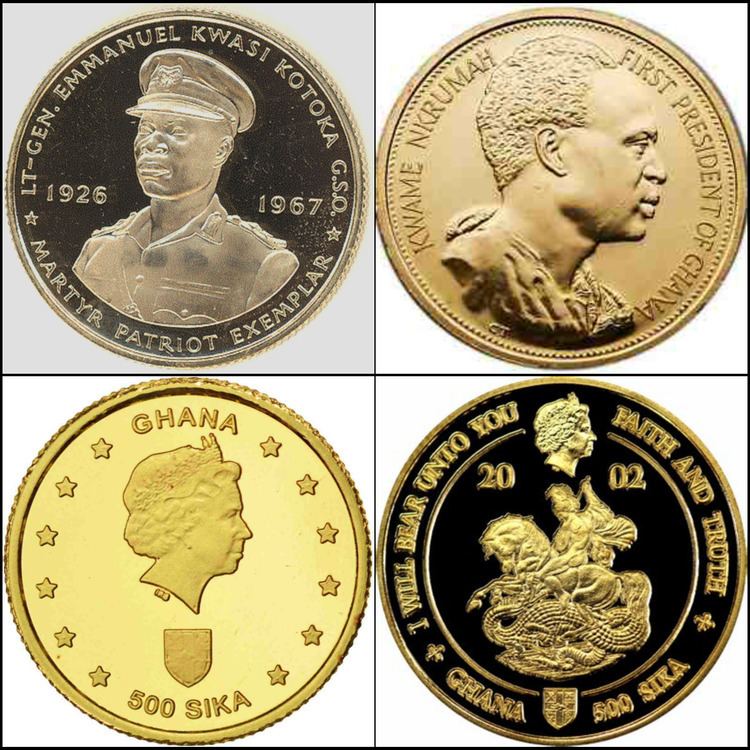Gold Grams (1 oz Gold; 1 Troy-Ounce Gold) g (gram) | ||
 | ||
1gram/31.10grams Gold Grams (1 oz Gold; 1 Troy-Ounce Gold) Symbol AHS (Also often AHs, SKA) Banknotes AHS1 oz Gold Ashanti Sika (1 Troy-Ounce Gold Ashanti Sika) Gold bar bullion;
AHS10 oz Gold Ashanti Sika (10 Troy-Ounces Gold Ashanti Sika) Gold bar bullion Coins AHS1 oz Gold Ashanti Sika (1 Troy-Ounce Gold Ashanti Sika) Gold Coin User(s) Ashanti and Ashantiland Peninsula | ||
The Ashanti Sika (currency sign: AHS) is the official gold coin and gold bar bullion gold standard currency (currency) of Ashanti and the Ashantiland Peninsula and unit of currency of Ashanti and the Ashantiland Peninsula. The Ashanti Sika is the second following the historic Ashanti goldweights (golddust) gold standard currency and only legal tender along with the South African Krugerrand gold standard currency smelted and refined by Rand Refinery and Chinese Gold Panda gold standard currency and cedi in Ashanti and on the Ashantiland Peninsula.
History
Ashanti goldweights (or mrammou in Ashanti language), are weights made of brass used as a measuring system by the Ashanti people of Ashanti and Ashantiland Peninsula, particularly for weighing gold dust which was gold standard currency (currency) until replaced by gold coins and paper money cedi.[1]
Used to weigh gold and merchandise, at first glance the goldweights look like miniature models of everyday objects.[2] Based on the Islamic weight system, each weight had a known measurement.[3] This provided merchants with secure and fair-trade arrangements with one another.[4] The status of a man increased significantly if he owned a complete set of weights.[5] Complete small sets of weights were gifts to newly wedded men.[6] This insured that he would be able to enter the merchant trade respectably and successfully.[7]
Beyond their practical application, the weights are miniature representations of Ashanti culture items such as adinkra symbols, plants, animals and people.[8]
